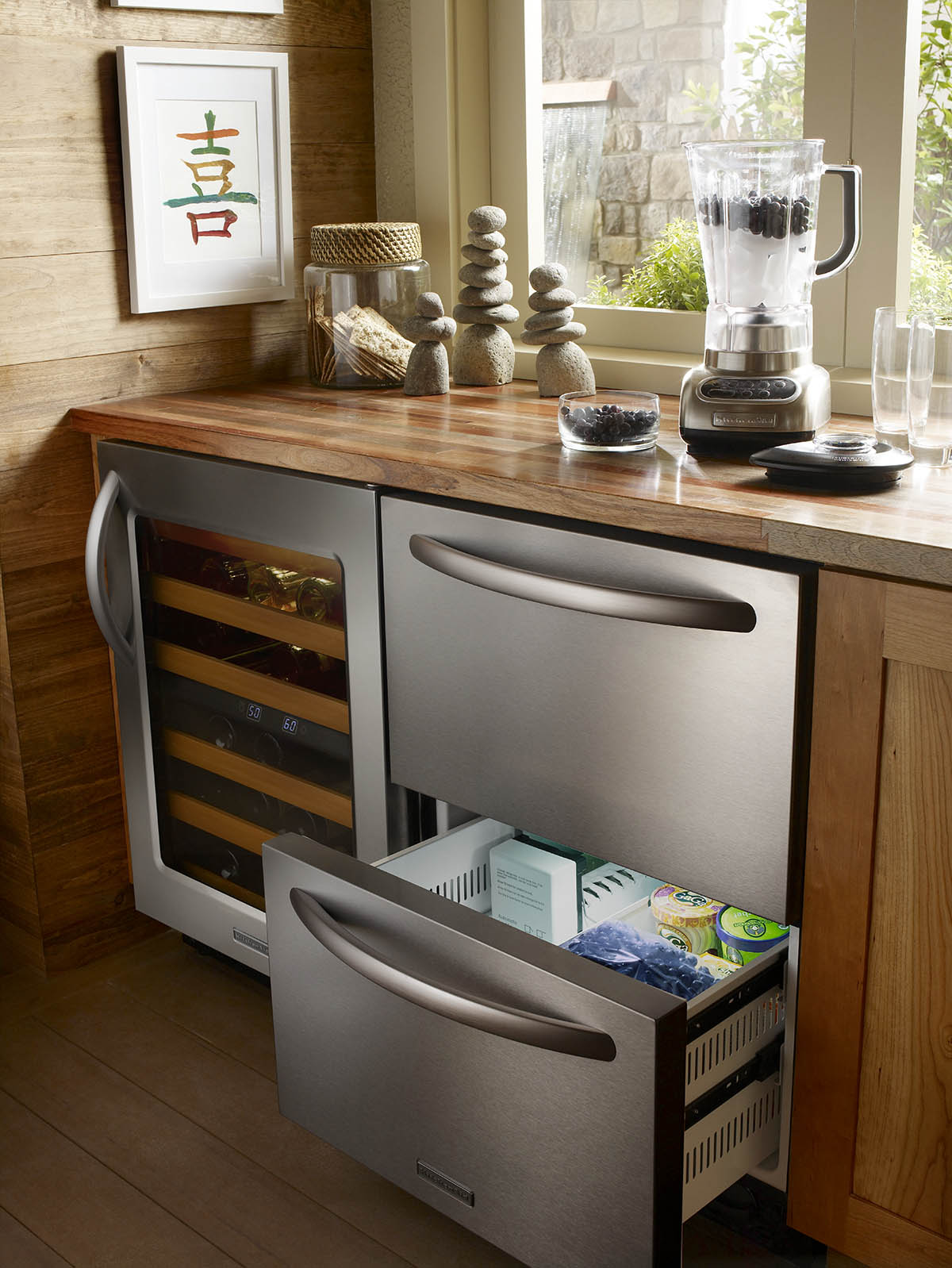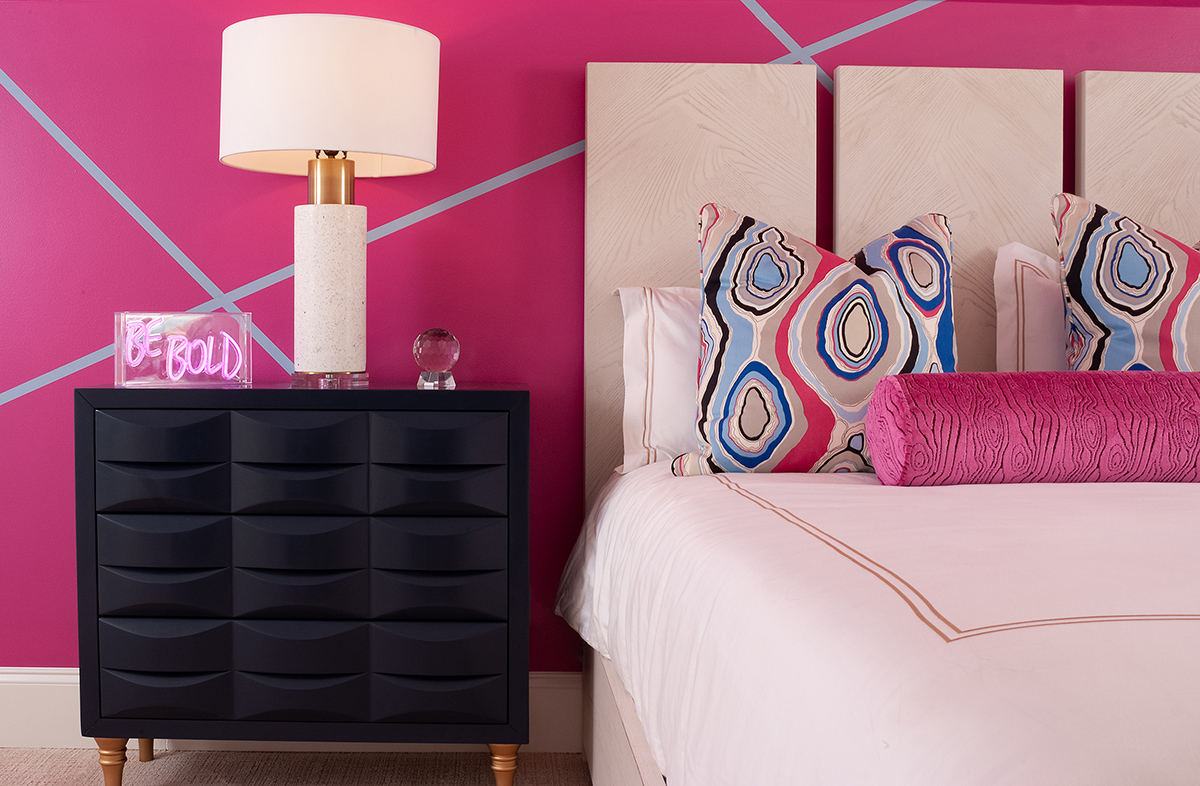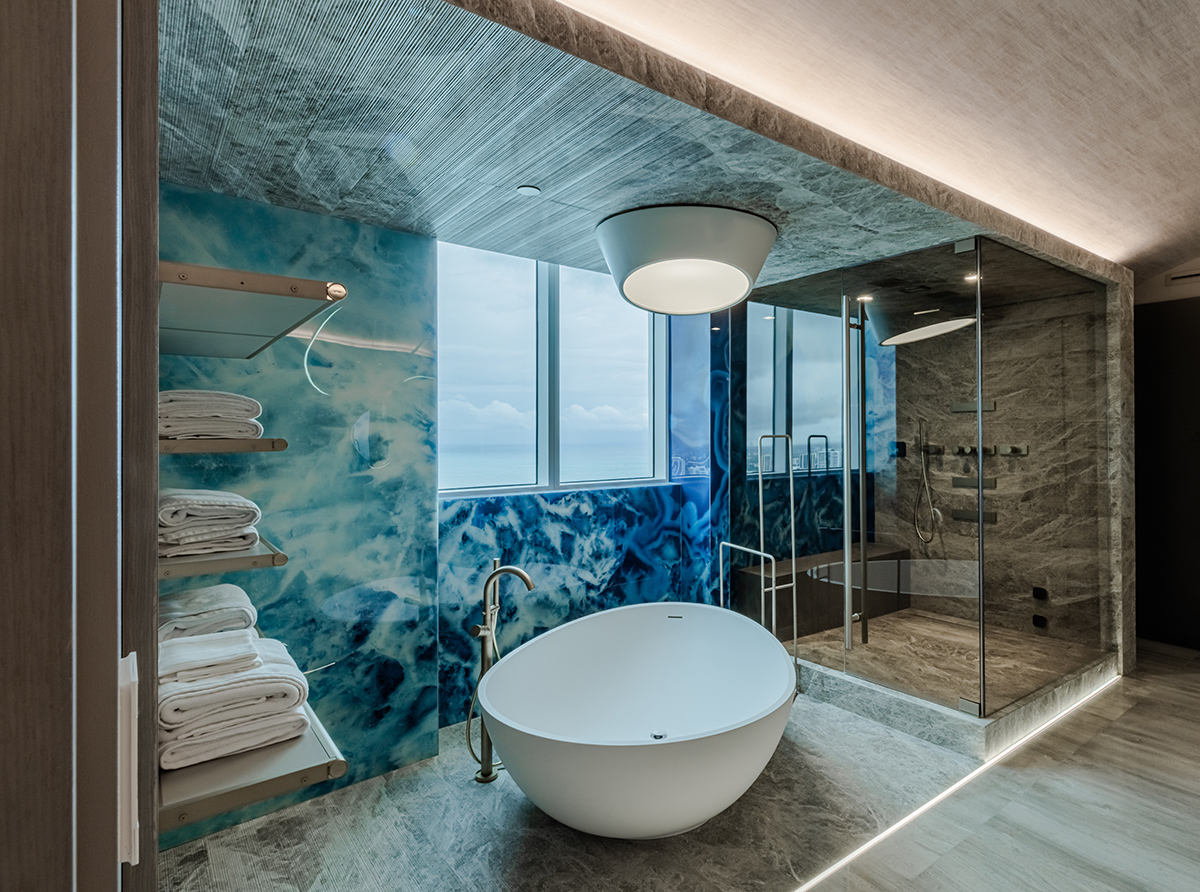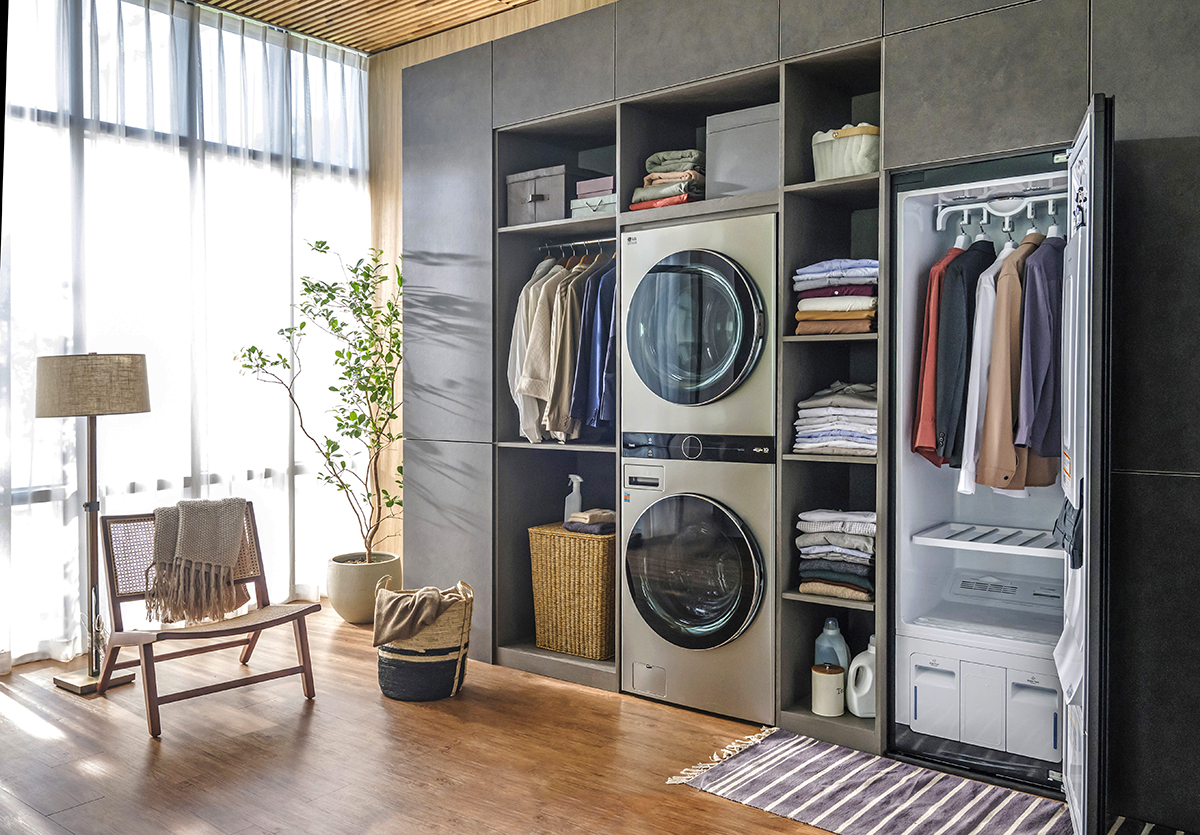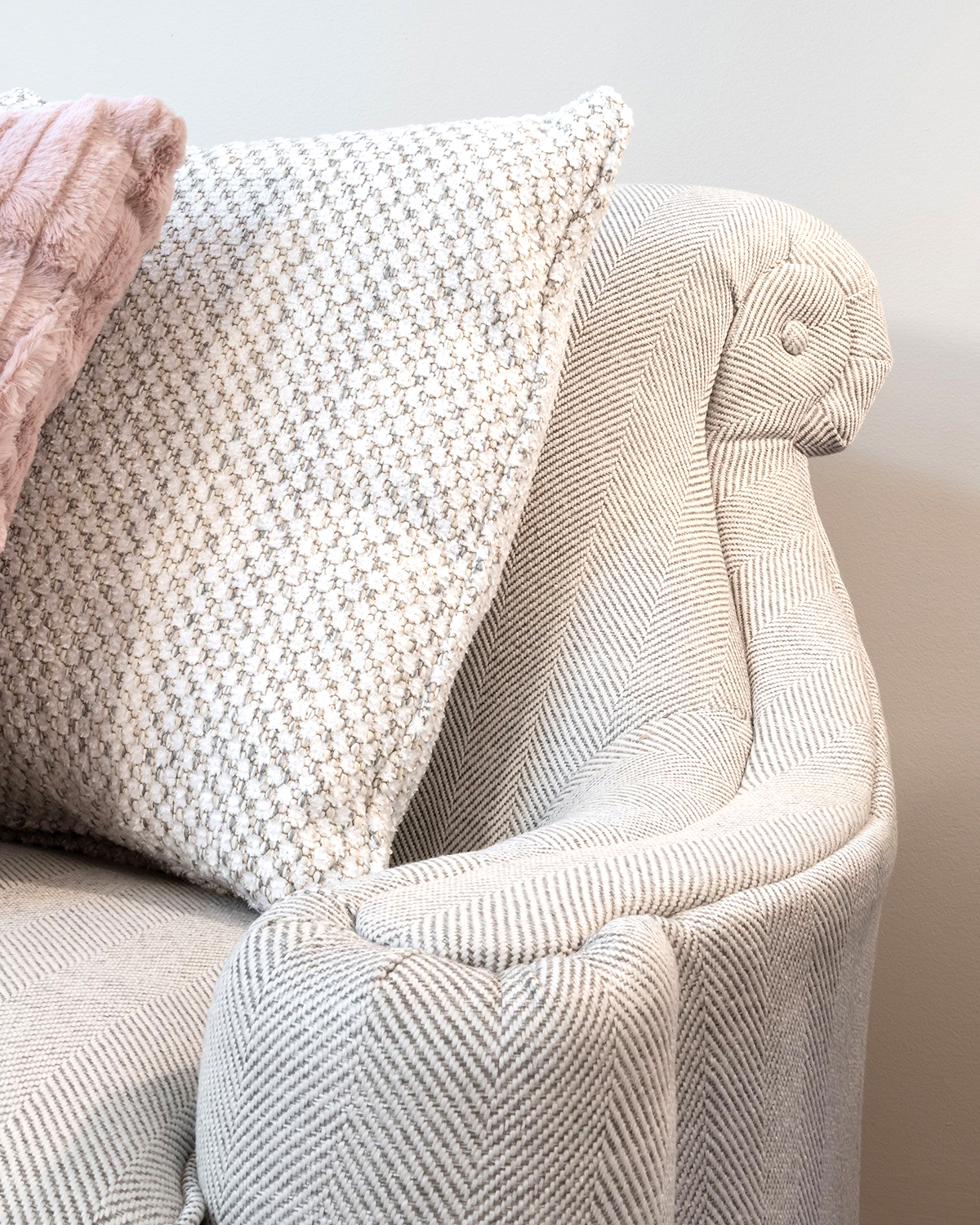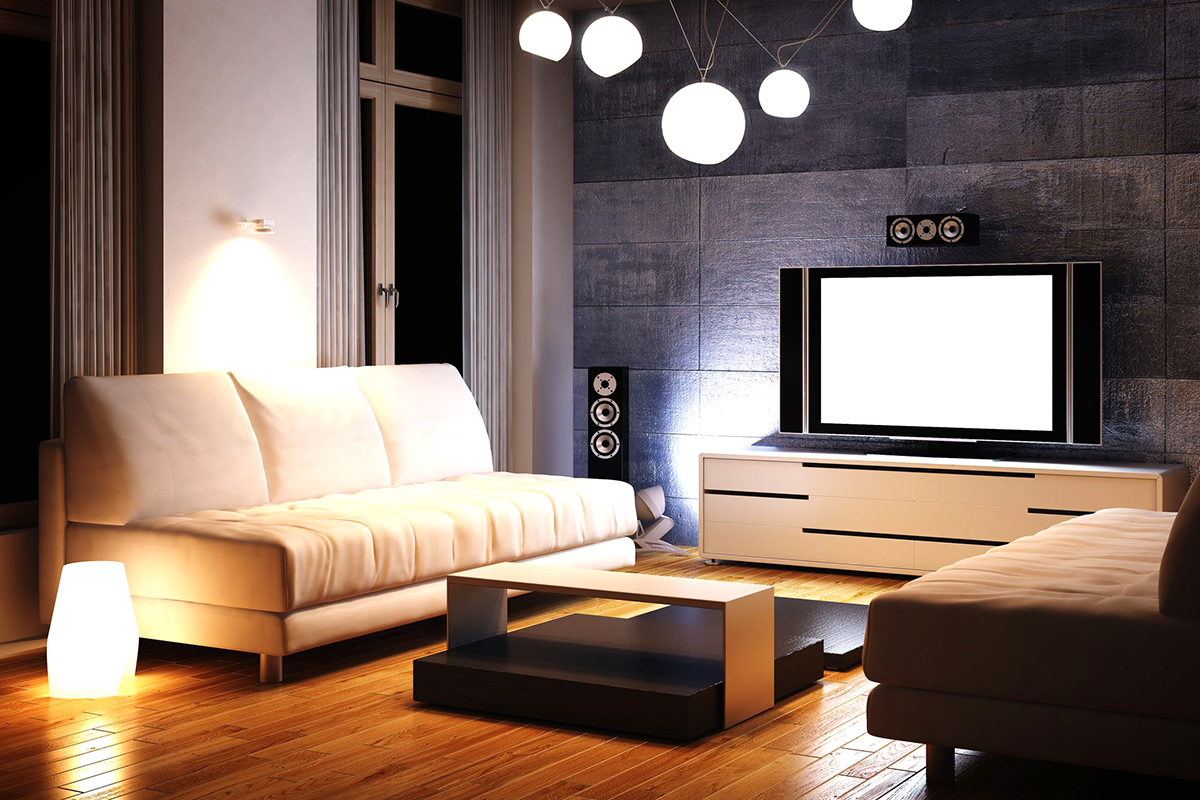WRITER | PAM TOIGO
PHOTO| ROMAN ROMANIUK
If wood veneer makes you think of the table you had in your very first apartment or that old school desk, then you’ve not really met wood veneer and all the things it can be.
WHAT IS WOOD VENEER?
Veneer, is by definition, a decorative layer of fine wood.
“What it is not,” says Brad McGinnis, president of McGinnis Veneer in Grand Rapids, “is fake wood.”
Veneer differs from well-known laminate, which is a thin paper material printed with a grain made to mimic wood and then essentially laminated. Veneer, on the other hand, is a thin slice of real wood made by rotary cutting or slicing of the log. This paper-thin cut of wood is applied to both sides of a strong core surface, like furniture-grade MDF or substrate material, and then sealed and stabilized. The appearance and grain design of veneer varies depending on the type of wood and the angle at which it is cut. The majority of veneer is sliced from hardwood trees.
Although often seen in modern design applications today, wood veneer has been around for a very long time. You may be familiar with famous 18th-century English designer Thomas Chippendale, who used veneer to produce his exquisite furniture. Later, the piano industry became the first industry in North America to use veneer. By the mid-1800s, a veneer-cutting lathe was patented, paving the way for the development of today’s lathes. By the 1890s, veneer was becoming increasingly affordable. Today, its use extends to household finishes from wall paneling, cabinetry, doors, and tables to commercial applications.
EXACTLY HOW IS IT MADE?
Wood veneer production starts when logs are measured, sorted, and stored by quality. Before the peeling process, the wood must be softened. Softening makes it easier to cut the veneer strips in even thicknesses. Logs are soaked in water at 104°F for two days. Moist, warm logs are peeled or debarked, then carefully measured and rotary cut into long, thin layers. The drying process then begins as full veneer mats or clipped sheets are pressurized for 4-5 minutes in 338°F air. This process stabilizes the veneer by reducing the moisture content to the correct level before further processing takes place. After drying, veneer sheets are inspected for defects such as split-ends, knot-holes, loose knots, or color defects, and then sorted by quality. The veneer sheets are then packaged or sent to production for plywood, furniture, cabinetry, or other applications.
WHY IS WOOD VENEER A GOOD CHOICE?
There are many reasons why wood veneer would be chosen over solid wood construction, says McGinnis. One reason is that wood veneer does not expand and contract with temperature changes like solid wood does, making it more stable and sturdier. This is helpful when creating anything with a mechanism or moving part, such as a hinge, and it is also why things like drawers and cabinets are usually constructed with the use of veneers.
McGinnis notes that wood veneer is an environmentally-friendly choice. “If every wood piece were made of solid wood, it would take many more logs to build a kitchen. We can cut the veneer to 1/50th of an inch, allowing us to yield a greater amount of product from just one log,” says McGinnis.
Veneer also allows for greater consistency and more choices with the product. “Because so much veneer can be produced from a single log, something like office furniture or kitchen cabinets in a house can have the same grain design, color, and look,” notes McGinnis. “We can offer over 100 different species from all over the world that would not be available in lumber.”



